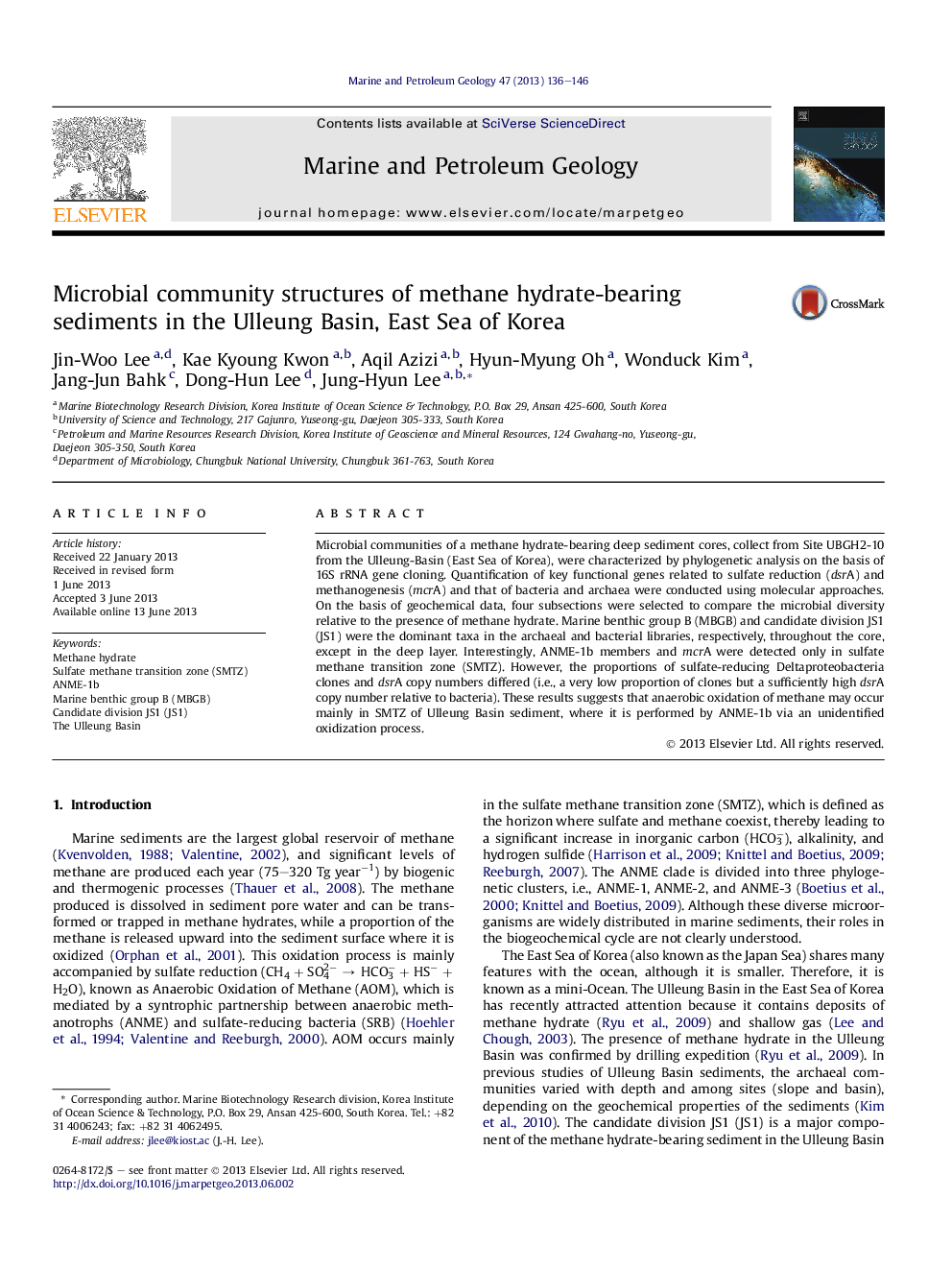| Article ID | Journal | Published Year | Pages | File Type |
|---|---|---|---|---|
| 4695749 | Marine and Petroleum Geology | 2013 | 11 Pages |
Microbial communities of a methane hydrate-bearing deep sediment cores, collect from Site UBGH2-10 from the Ulleung-Basin (East Sea of Korea), were characterized by phylogenetic analysis on the basis of 16S rRNA gene cloning. Quantification of key functional genes related to sulfate reduction (dsrA) and methanogenesis (mcrA) and that of bacteria and archaea were conducted using molecular approaches. On the basis of geochemical data, four subsections were selected to compare the microbial diversity relative to the presence of methane hydrate. Marine benthic group B (MBGB) and candidate division JS1 (JS1) were the dominant taxa in the archaeal and bacterial libraries, respectively, throughout the core, except in the deep layer. Interestingly, ANME-1b members and mcrA were detected only in sulfate methane transition zone (SMTZ). However, the proportions of sulfate-reducing Deltaproteobacteria clones and dsrA copy numbers differed (i.e., a very low proportion of clones but a sufficiently high dsrA copy number relative to bacteria). These results suggests that anaerobic oxidation of methane may occur mainly in SMTZ of Ulleung Basin sediment, where it is performed by ANME-1b via an unidentified oxidization process.
